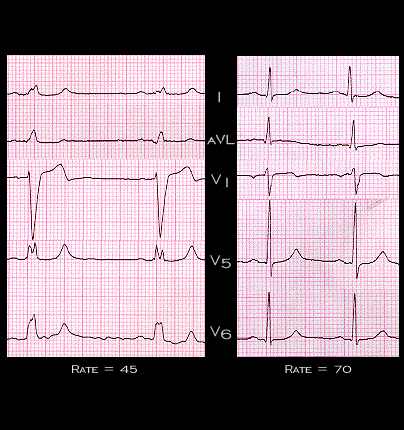
Rarely, intraventricular conduction disturbances may be bradycardia dependent, occurring only at slower heart rates. The ECGs shown here illustrate left bundle branch block when the rate is 45, but a normally conducted QRS complex when the rate is 70. This form of aberrant ventricular conduction occurs most frequently in patients with heart disease and most frequently involves the left bundle.
